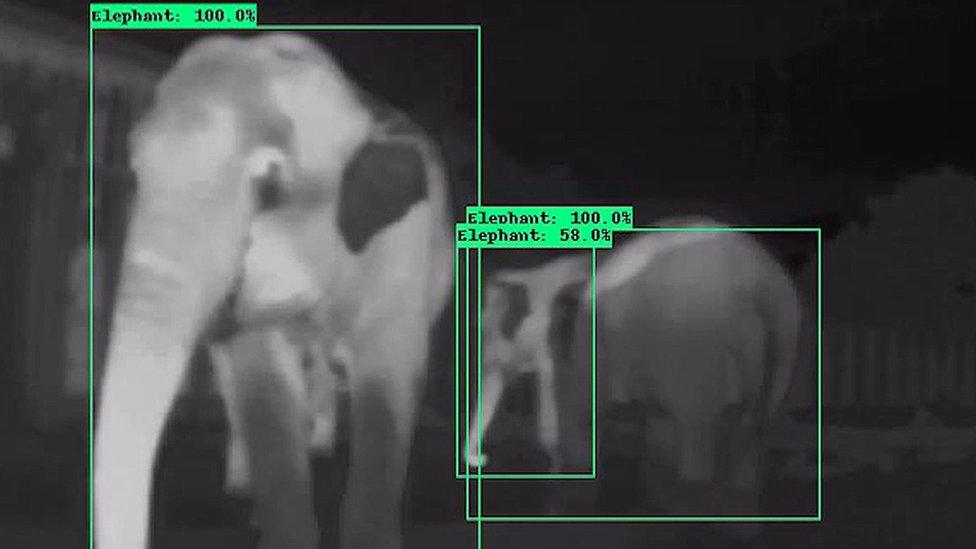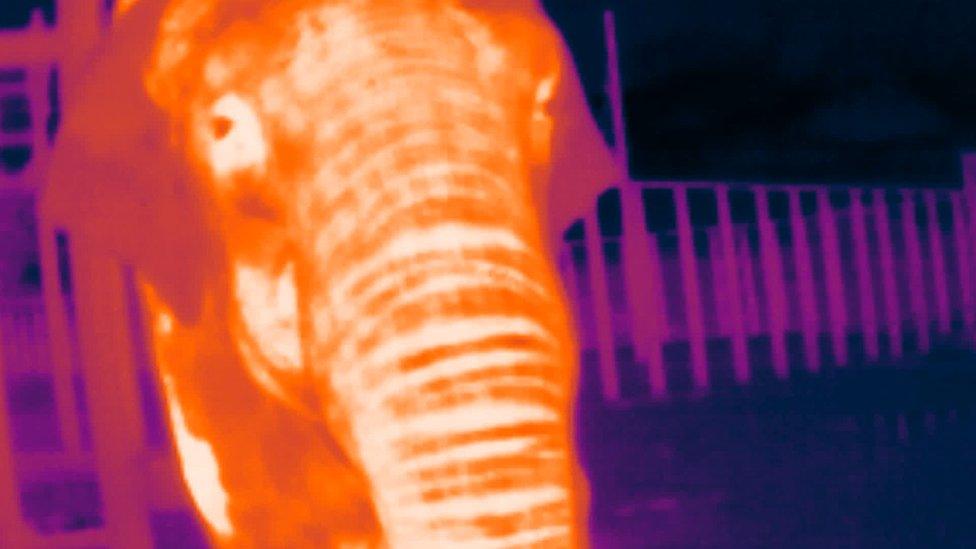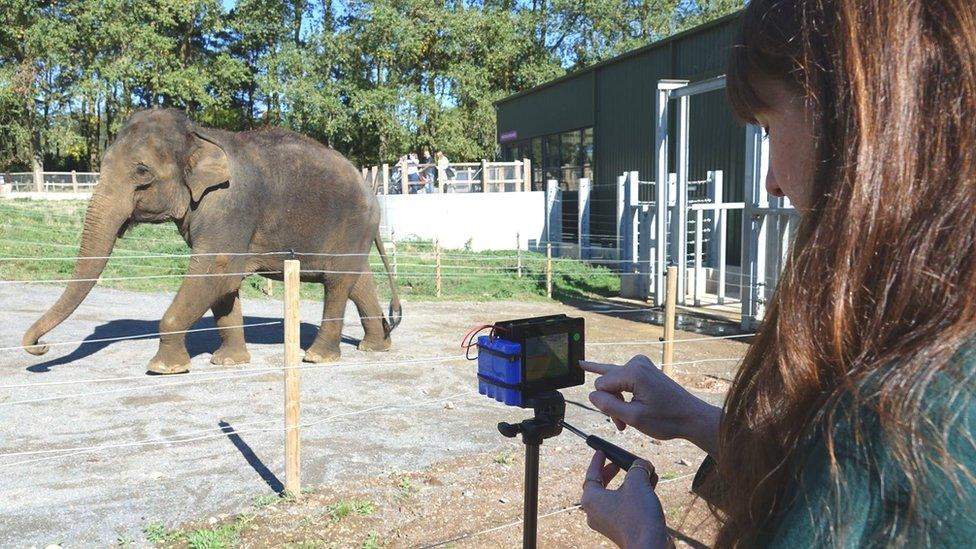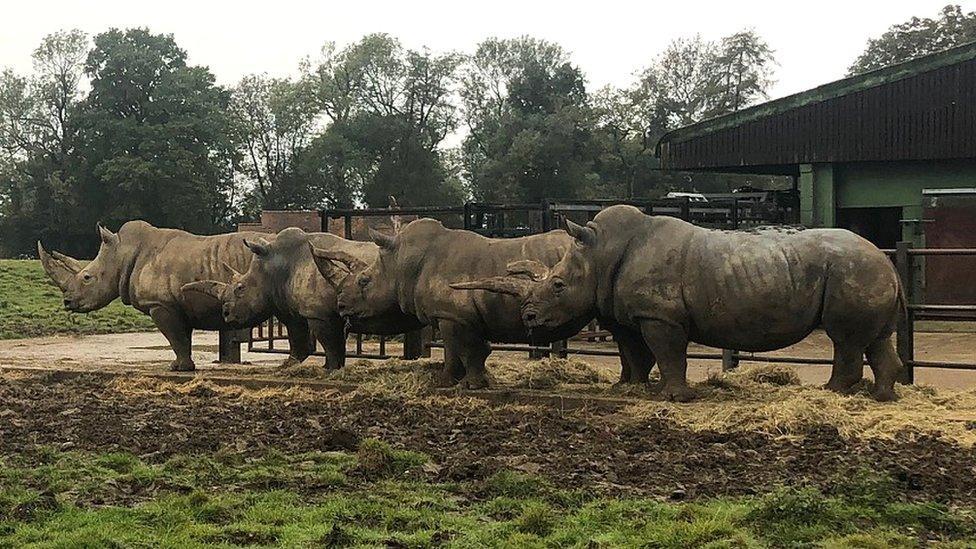How 30,000 elephant 'selfies' will help in conservation
- Published
Thousands of images have been collected of elephants at every angle
Zoo keepers have compiled the world's largest collection of thermal images of elephants.
The pictures show elephants in every pose as they play, eat and hang out in their enclosure at ZSL Whipsnade Zoo.
The 30,000 "selfies" are being used in a conservation project to help save endangered elephants.
The researchers are developing new technology to help reduce human-elephant conflicts in countries where elephants roam free.
Alasdair Davies is conservation technology expert at the Zoological Society of London (ZSL).
He said the project had implications for both wild elephants and the people they live alongside in Africa and Asia.

The camera can "see" the thermal shape of an elephant
He told BBC News: "It can detect elephants confidently at a certain distance - and we want to get this into the field now and actually put it in the wild helping wild animals and communities live side-by-side."
The database of thermal images has been used to train cameras to recognise what an elephant looks like from the heat it gives off.
The cameras are able to detect when an elephant is close by - even in the dark - and send an alert.
Clashes between humans and elephants pose a grave threat to the survival of wild elephants in Asia and Africa.

Elephants played a pivotal role in developing the new tech
People and elephants are being forced into ever closer contact as the human population grows and wild habitat disappears.
This can end in trashed crops, damaged property and the loss of lives.
India alone reports annual deaths of 400 people and 100 elephants through conflicts arising when elephants damage crops or homes.
Dr Kate Evans of conservation charity, Elephants for Africa, said conflict between humans and elephants is a growing problem.
"Elephants are iconic species and they're really important to the ecology and economy of many countries so it's important we conserve them, however if you're a subsistence farmer bordering a national park or a protected area then living with elephants comes at a very big price."
The hope is that the new technology will be an affordable solution to helping wildlife and humans live in harmony - and help protect endangered species.

Thermal camera in operation at ZSL Whipsnade Zoo
But ZSL warns that conservation efforts like these are put at threat by the funding crisis affecting UK zoos.
A spokesperson said: "In 2020, ZSL lost £20m of income due to the closures of London and Whipsnade Zoos, and the strictly limited visitor capacities when they were open."
Last month, Chester Zoo announced that it was putting some conservation work in Africa and Asia on hold because of the impact of Covid on its finances.
Follow Helen on Twitter, external.
- Published1 October 2020
